Date February 2, 1959 Type Multiple deaths | Venue Dyatlov Pass Cause Undetermined | |
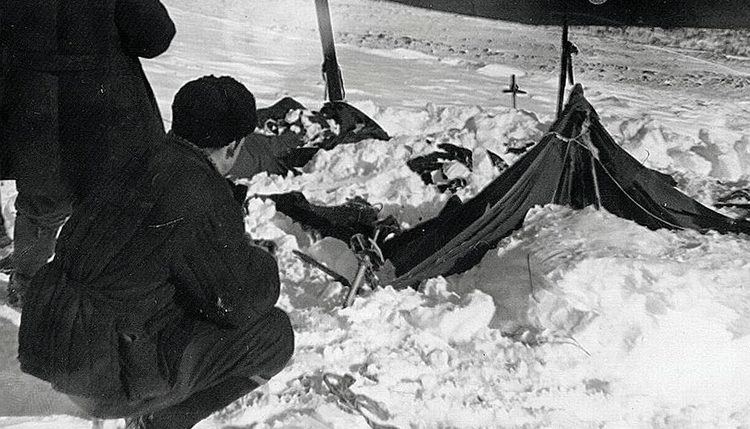 | ||
Native name Гибель тургруппы Дятлова Location Kholat Syakhl, Northern Urals, Russia Similar Tamam Shud case, Malaysia Airlines Flight 370, YOGTZE case | ||
The Dyatlov Pass incident (Russian: Гибель тургруппы Дятлова) refers to the mysterious unsolved deaths of nine ski hikers in the northern Ural Mountains on February 2, 1959. The experienced trekking group, who were all from the Ural Polytechnical Institute, had established a camp on the slopes of Kholat Syakhl when disaster struck. During the night something made them tear their way out of their tents from the inside and flee the campsite inadequately dressed in heavy snowfall and sub-zero temperatures.
Contents
- Dyatlov pass incident what really happened research interview
- Background
- Search and discovery
- Investigation
- Controversy regarding investigation
- Aftermath
- Avalanche
- Infrasound
- Military tests
- Paradoxical undressing
- Cryptozoological explanation
- Other
- In popular culture
- References

Soviet investigators determined that six victims died from hypothermia while others showed signs of physical trauma. One victim had a fractured skull while another had brain damage but without any sign of distress to their skull. Additionally, a female team member had her tongue missing. The investigation concluded that an "unknown compelling force" had caused the deaths. Access to the region was consequently closed to amateur hikers and expeditions for three years after the incident (the area is named Dyatlov Pass in honor of the group's leader, Igor Dyatlov).
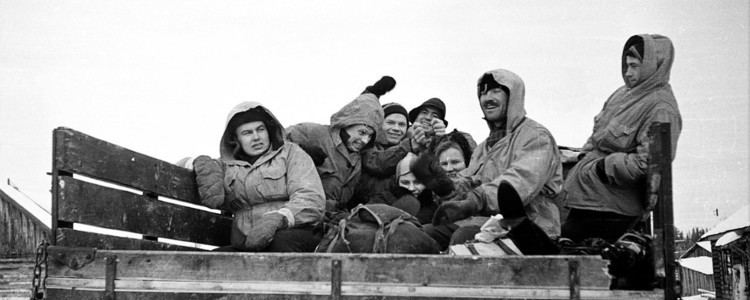
As the chronology of events remains uncertain due to the lack of survivors, several explanations have been put forward as to the cause; they include an animal attack, hypothermia, an avalanche, infrasound-induced panic, military involvement, or a combination of explanations.
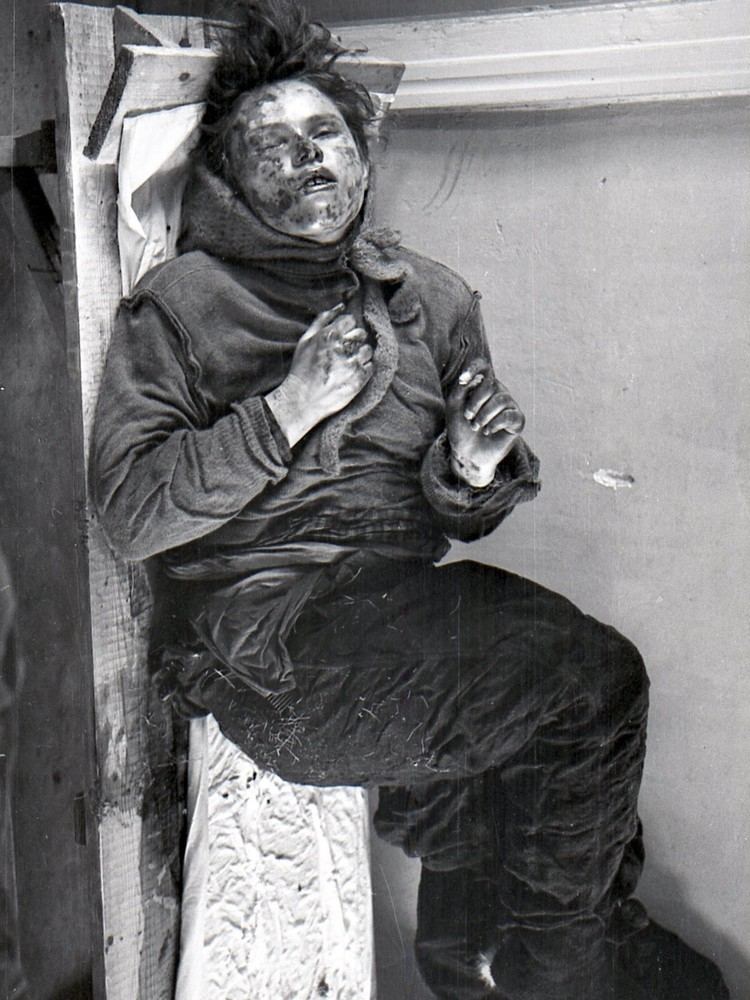
Dyatlov pass incident what really happened research interview
Background

A group was formed for a ski trek across the northern Urals in Sverdlovsk Oblast. The original group, led by Igor Dyatlov, consisted of eight men and two women. Most were students or graduates of Ural Polytechnical Institute (Уральский политехнический институт, УПИ), now Ural Federal University:
- Igor Alekseievich Dyatlov (Игорь Алексеевич Дятлов), the group's leader, born January 13, 1936 (aged 23)
- Yuri Nikolaievich Doroshenko (Юрий Николаевич Дорошенко), born January 29, 1938 (aged 21)
- Lyudmila Alexandrovna Dubinina (Людмила Александровна Дубинина), born May 12, 1938 (aged 20)
- Yuri (Georgiy) Alexeievich Krivonischenko (Юрий (Георгий) Алексеевич Кривонищенко), born February 7, 1935 (aged 23)
- Alexander Sergeievich Kolevatov (Александр Сергеевич Колеватов), born November 16, 1934 (aged 24)
- Zinaida Alekseevna Kolmogorova (Зинаида Алексеевна Колмогорова), born January 12, 1937 (aged 22)
- Rustem Vladimirovich Slobodin (Рустем Владимирович Слободин), born January 11, 1936 (aged 23)
- Nicolai Vladimirovich Thibeaux-Brignolles (Николай Владимирович Тибо-Бриньоль), born July 8, 1935 (aged 23)
- Semyon (Alexander) Alekseevich Zolotariov (Семён (Александр) Алексеевич Золотарёв), born February 2, 1921 (aged 38)
- Yuri Yefimovich Yudin (Юрий Ефимович Юдин), born July 19, 1937, died April 27, 2013 (aged 75)
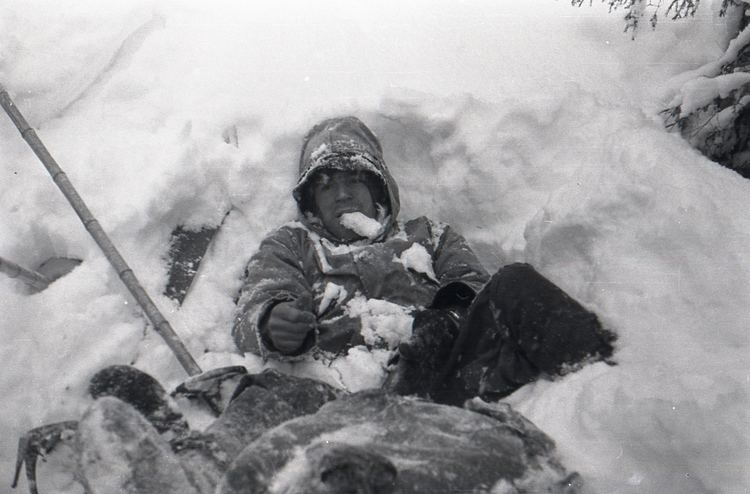
The goal of the expedition was to reach Otorten (Отортен), a mountain 10 kilometres (6.2 mi) north of the site of the incident. This route, in February, was estimated as Category III, the most difficult. All members were experienced in long ski tours and mountain expeditions.
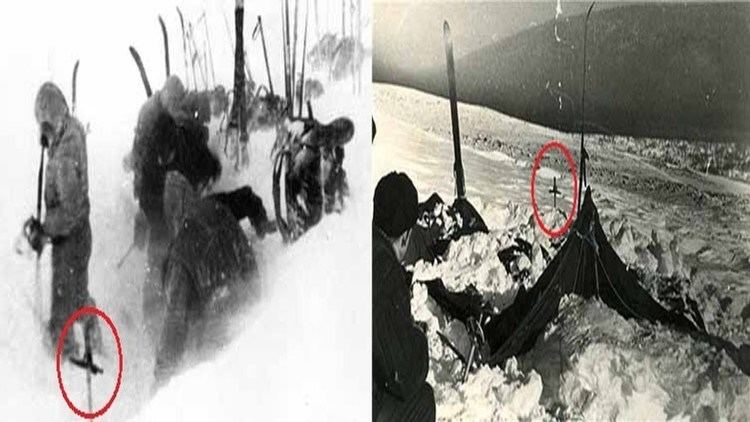
The group arrived by train at Ivdel (Ивдель), a city at the center of the northern province of Sverdlovsk Oblast on January 25. They then took a truck to Vizhai (Вижай) – the last inhabited settlement so far north. They started their march toward Otorten from Vizhai on January 27. The next day, one of the members, Yuri Yudin, was forced to go back due to illness. The remaining group of nine people continued the trek.
Diaries and cameras found around their last campsite made it possible to track the group's route up to the day preceding the incident. On January 31, the group arrived at the edge of a highland area and began to prepare for climbing. In a wooded valley they cached surplus food and equipment that would be used for the trip back. The following day (February 1), the hikers started to move through the pass. It seems they planned to get over the pass and make camp for the next night on the opposite side, but because of worsening weather conditions – snowstorms and decreasing visibility – they lost their direction and deviated west, up towards the top of Kholat Syakhl. When they realized their mistake, the group decided to stop and set up camp there on the slope of the mountain, rather than moving 1.5 kilometres (0.93 mi) downhill to a forested area which would have offered some shelter from the elements. Yudin postulated that "Dyatlov probably did not want to lose the altitude they had gained, or he decided to practice camping on the mountain slope."
Search and discovery
Before leaving, Dyatlov had agreed he would send a telegram to their sports club as soon as the group returned to Vizhai. It was expected that this would happen no later than February 12, but Dyatlov had told Yudin, before his departure from the group, that he expected to be longer. When the 12th passed and no messages had been received, there was no immediate reaction, as delays of a few days were common with such expeditions. It was not until the relatives of the travelers demanded a rescue operation on February 20 that the head of the institute sent the first rescue groups, consisting of volunteer students and teachers. Later, the army and militsiya forces became involved, with planes and helicopters being ordered to join the rescue operation.
On February 26, the searchers found the group's abandoned and badly damaged tent on Kholat Syakhl. The campsite baffled the search party. Mikhail Sharavin, the student who found the tent, said "the tent was half torn down and covered with snow. It was empty, and all the group's belongings and shoes had been left behind." Investigators said the tent had been cut open from inside. Eight or nine sets of footprints, left by people who were wearing only socks, a single shoe or were even barefoot, could be followed, leading down toward the edge of a nearby woods, on the opposite side of the pass, 1.5 kilometres (0.93 mi) to the north-east. However, after 500 metres (1,600 ft) these tracks were covered with snow. At the forest's edge, under a large cedar, the searchers found the visible remains of a small fire, along with the first two bodies, those of Krivonischenko and Doroshenko, shoeless and dressed only in their underwear. The branches on the tree were broken up to five metres high, suggesting that one of the skiers had climbed up to look for something, perhaps the camp. Between the cedar and the camp the searchers found three more corpses: Dyatlov, Kolmogorova and Slobodin, who seemed to have died in poses suggesting that they were attempting to return to the tent. They were found separately at distances of 300, 480 and 630 metres from the tree.
Searching for the remaining four travelers took more than two months. They were finally found on May 4 under four metres of snow in a ravine 75 metres farther into the woods from the cedar tree. These four were better dressed than the others, and there were signs that those who had died first had apparently relinquished their clothes to the others. Zolotariov was wearing Dubinina's faux fur coat and hat, while Dubinina's foot was wrapped in a piece of Krivonishenko's wool pants.
Another notable find besides the four remaining hikers was a camera around Zolotariov's neck. The camera was not reported as having been part of the equipment. Also, the film in the camera was reported to have been damaged by water.
Investigation
A legal inquest started immediately after finding the first five bodies. A medical examination found no injuries which might have led to their deaths, and it was eventually concluded that they had all died of hypothermia. Slobodin had a small crack in his skull, but it was not thought to be a fatal wound.
An examination of the four bodies which were found in May shifted the narrative as to what had occurred during the incident. Three of the ski hikers had fatal injuries: Thibeaux-Brignolles had major skull damage, and both Dubinina and Zolotarev had major chest fractures. According to Dr. Boris Vozrozhdenny, the force required to cause such damage would have been extremely high, comparing it to the force of a car crash. Notably, the bodies had no external wounds related to the bone fractures, as if they had been subjected to a high level of pressure. However, major external injuries were found on Dubinina, who was missing her tongue, eyes, part of the lips, as well as facial tissue and a fragment of skullbone; she also had extensive skin maceration on the hands. It was claimed that Dubinina was found lying face down in a small stream that ran under the snow and that her external injuries were in line with putrefaction in a wet environment, and were unlikely to be related to her death.
There was initial speculation that the indigenous Mansi people might have attacked and murdered the group for encroaching upon their lands, but investigation indicated that the nature of their deaths did not support this hypothesis; the hikers' footprints alone were visible, and they showed no sign of hand-to-hand struggle.
Although the temperature was very low, around −25 to −30 °C (−13 to −22 °F) with a storm blowing, the dead were only partially dressed. Some of them had only one shoe, while others had no shoes or wore only socks. Some were found wrapped in snips of ripped clothes that seemed to have been cut from those who were already dead.
Journalists reporting on the available parts of the inquest files claim that it states:
At the time the verdict was that the group members all died because of a compelling natural force. The inquest officially ceased in May 1959 as a result of the absence of a guilty party. The files were sent to a secret archive, and the photocopies of the case became available only in the 1990s, although some parts were missing.
Controversy regarding investigation
Aftermath
In 1967, Sverdlovsk writer and journalist Yuri Yarovoi (Russian: Юрий Яровой) published the novel Of the Highest Degree of Complexity, inspired by the incident. Yarovoi had been involved in the search for Dyatlov's group and at the inquest as an official photographer during both the search and the initial stage of the investigation, and so had insight into the events. The book was written during the Soviet era when details of the accident were kept secret and Yarovoi avoided revealing anything beyond the official position and well-known facts. The book romanticized the accident and had a much more optimistic end than the real events – only the group leader was found deceased. Yarovoi's colleagues say that he had alternative versions of the novel, but both were declined because of censorship. Since Yarovoi's death in 1980, all his archives, including photos, diaries and manuscripts, have been lost.
Anatoly Gushchin (Russian: Анатолий Гущин) summarized his research in the book The Price of State Secrets Is Nine Lives (Цена гостайны – девять жизней). Some researchers criticized the novel due to its concentration on the speculative theory of a Soviet secret weapon experiment, but its publication led to public discussion, stimulated by interest in the paranormal. Indeed, many of those who had remained silent for thirty years reported new facts about the accident. One of them was the former police officer, Lev Ivanov (Лев Иванов), who led the official inquest in 1959. In 1990, he published an article which included his admission that the investigation team had no rational explanation for the accident. He also stated that, after his team reported that they had seen flying spheres, he then received direct orders from high-ranking regional officials to dismiss this claim.
In 2000, a regional television company produced the documentary film The Mystery of Dyatlov Pass (Тайна перевала Дятлова). With the help of the film crew, a Yekaterinburg writer, Anna Matveyeva (Russian: Анна Матвеева), published a fiction/documentary novella of the same name. A large part of the book includes broad quotations from the official case, diaries of victims, interviews with searchers and other documentaries collected by the film-makers. The narrative line of the book details the everyday life and thoughts of a modern woman (an alter ego of the author herself) who attempts to resolve the case.
Despite its fictional narrative, Matveyeva's book remains the largest source of documentary materials ever made available to the public regarding the incident. In addition, the pages of the case files and other documentaries (in photocopies and transcripts) are gradually being published on a web forum for enthusiastic researchers.
A Dyatlov Foundation was founded in Yekaterinburg, with the help of Ural State Technical University, led by Yuri Kuntsevitch (Юрий Кунцевич). The foundation's stated aim is to convince current Russian officials to reopen the investigation of the case and to maintain the Dyatlov Museum to preserve the memory of the dead hikers.
Avalanche
The theory that an avalanche caused the hikers' deaths, while initially popular, has since been questioned. Reviewing the sensationalist "Yeti" hypothesis (see below), American skeptic author Benjamin Radford suggests as more plausible;
"that the group woke up in a panic (...) and cut their way out the tent either because an avalanche had covered the entrance to their tent or because they were scared that an avalanche was imminent (...) (better to have a potentially repairable slit in a tent than risk being buried alive in it under tons of snow). They were poorly clothed because they had been sleeping, and ran to the safety of the nearby woods where trees would help slow oncoming snow. In the darkness of night they got separated into two or three groups; one group made a fire (hence the burned hands) while the others tried to return to the tent to recover their clothing, since the danger had apparently passed. But it was too cold, and they all froze to death before they could locate their tent in the darkness. At some point some of the clothes may have been recovered or swapped from the dead, but at any rate the group of four whose bodies were most severely damaged were caught in an avalanche and buried under 13 feet of snow (more than enough to account for the 'compelling natural force' the medical examiner described). Dubinina's tongue was likely removed by scavengers and ordinary predation."
Evidence contradicting the avalanche theory includes:
Infrasound
Another hypothesis popularized by Donnie Eichar's 2013 book Dead Mountain is that wind going around Holatchahl Mountain created a Kármán vortex street, which can produce infrasound capable of inducing panic attacks in humans.
Military tests
Some people believe it was a military accident which was then covered up; there are records of parachute mines being tested by the Russian military in the area around the time the hikers were there. Parachute mines detonate a meter or two before they hit the ground and produce similar damage to those experienced by the hikers, heavy internal damage with very little external trauma. There were also glowing orbs reported in the sky in that general vicinity, possibly caused by such ordnance. This theory uses animals to account for the missing nose, tongue and leg of certain victims. People believe the bodies were moved; photos of the tent show that it was apparently erected incorrectly, something that these experienced hikers are unlikely to have done.
This theory, in particular when speculating on radiological weapons, is partly based on the findings of radioactivity on some of the clothing as well as the bodies being described by relatives as having orange skin and grey hair. However, radioactive dispersal would have affected all of the hikers and equipment instead of just some of it, and the skin and hair discolouration can be explained by a natural process of mummification after three months of exposure to the cold and winds. Furthermore, the initial suppression of files regarding the group's disappearance by Soviet authorities is sometimes mentioned as evidence of a cover-up, but the concealment of information regarding domestic incidents was standard procedure in the USSR and therefore far from peculiar. And by the late 1980s, all Dyatlov files had been released in some manner.
Paradoxical undressing
iScience Times posited that the hikers' deaths were caused by hypothermia, which can induce a behavior known as paradoxical undressing in which hypothermic subjects remove their clothes in response to perceived feelings of burning warmth. That six out of nine hikers died of hypothermia is undisputed. The hypothesis doesn't address why the hikers fled the tent in the first place. The temperature inside the tent would not have been low enough to induce paradoxical undressing.
Cryptozoological explanation
The 2014 Discovery Channel special Russian Yeti: The Killer Lives explored the cryptozoology theory that the Dyatlov group was killed by a Menk or Russian Yeti. The show begins with the premise that the skiers' injuries were such that only a creature with superhuman strength could have caused them."
The episode found no evidence to prove that the Yeti exists.
Other
Donnie Eichar, who investigated and made a documentary about the incident, evaluated several other theories that are deemed unlikely or have been discredited:
In popular culture
Popular interest in Russia was revived in the 1990s in the wake of Gushchin's 1990 novel, The Price of State Secrets Is Nine Lives. In 2000, a regional television company produced the documentary film, with a follow-up novella by Anna Matveyeva. Anna Kiryanova wrote a journal-style novel based on a fictionalized account of the incident in 2005.
The incident came to wider attention in popular media outside of Russia in the 2010s.
